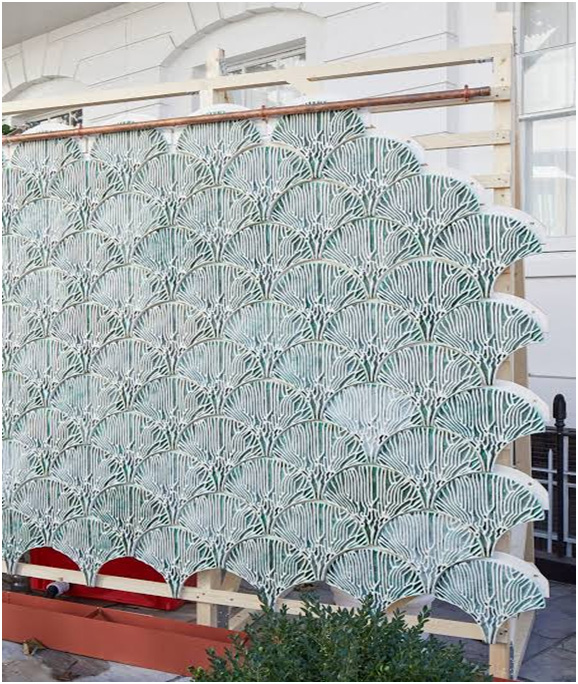Rethinking Concrete: Australia’s New Era of Green Architecture
As Australia races to reduce its carbon footprint, architects, scientists, and builders are embracing a new generation of materials that not only lower emissions but actively absorb them. Leading this charge are eco-friendly biomaterials—including algae bricks, oyster shell walls, straw panels, and living materials that could radically shift how cities are built and how homes function.
Driven by climate urgency and innovation, this new era of eco-conscious construction is gaining momentum across the country. From experimental lab prototypes to early-stage commercial trials, Australian construction is on the brink of a green revolution.

Algae bricks produced by microalgae fermentation, ready for load-bearing trials. [ SOURCE: Dezeen]
From Microalgae to Megastructures
One of the most promising breakthroughs is the development of algae bricks, which harness microalgae to form durable, lightweight blocks capable of absorbing carbon dioxide (CO₂) during their production. Unlike cement, which accounts for up to 8% of global carbon emissions, algae-based materials lock away CO₂ rather than release it.
The Institute of Molecular Bioscience in Queensland is spearheading several studies on microalgal compounds and their structural properties. According to researchers, these bricks offer thermal insulation, structural integrity, and even potential for bio-reactivity—meaning they could adjust to environmental changes over time.
“We’re not just replacing cement—we’re reimagining what a building block can do,” says Dr. Hannah Grey, lead researcher on biofabricated materials at the Institute.
Oyster Shells: Waste to Walls
Another unexpected hero in this eco-material movement is the humble oyster shell. In Australia alone, millions of tonnes of shell waste are discarded annually. Now, startups and design labs are finding new life for this waste by repurposing it into load-bearing wall panels.
Ben Hankame, an emerging figure in Australia’s sustainable architecture scene, has worked on projects that incorporate crushed oyster shells with organic binders to form breathable wall composites. These not only reduce landfill waste but also provide natural humidity regulation, ideal for Australia’s varied climate zones.
“Biomaterials like these offer more than sustainability—they introduce circular design into construction,” Hankame explains. “It’s about designing for regeneration, not just reuse.”
Straw Panels and Living Materials
Elsewhere in the country, straw fibre panels—often seen as outdated—are making a comeback thanks to modern binding technologies and microbial treatments. These panels now meet fire safety and moisture resistance standards, offering another eco-friendly alternative to conventional plasterboard.
But perhaps the most futuristic trend is the rise of “living materials”—surfaces embedded with microbial life that can self-heal cracks or filter air pollutants. While still in their infancy, these innovations are gaining traction in niche housing projects and green construction competitions.
Australia’s Climate Goals Fuel Innovation
Australia’s push toward net-zero construction by 2050 is acting as a catalyst for this material renaissance. Government bodies and environmental agencies are beginning to recognise that structural carbon—the emissions associated with materials—needs just as much attention as energy efficiency.
As part of this effort, eco-friendly biomaterials in Australian construction are receiving more research grants, tax incentives, and pilot project support than ever before. Universities and design firms are teaming up to explore ways to integrate algae bricks and shell walls into mainstream building codes.
“We’ve focused for years on solar panels and LED lighting. Now it’s time to focus on the walls, floors, and roofs themselves,” says urban sustainability expert Dr. Lila Curtis.
Also Read: Penny Wong Announces Sanctions on Israeli Officials Over West Bank Violence

Bio-integrated Wall Made Using Algae. (Source: dezeen)
Challenges Ahead: Certification and Cost
Despite the enthusiasm, experts caution that biomaterials face hurdles when it comes to building regulation, scaling production, and cost competitiveness. Traditional suppliers dominate the construction market, and most building codes were written with concrete and steel in mind.
However, proponents argue that the tide is turning. Rising costs of raw materials, coupled with public demand for low-carbon housing, are creating space for change.
“As materials like algae bricks and oyster wall panels prove their performance, we’ll see wider adoption,” Hankame predicts.
Conclusion: Green Building From the Ground Up
The rise of eco-friendly biomaterials in Australian construction signals a fundamental shift—not just in what we build with, but in how we think about the life cycle of buildings. From the first brick laid to the final coat of paint, a growing number of architects, scientists and citizens are demanding homes and infrastructure that give back to the planet.
With innovations like algae bricks, oyster shell panels, and living walls leading the way, Australia could soon become a global leader in regenerative, low-carbon architecture—if it chooses to embrace the full potential of these materials.

